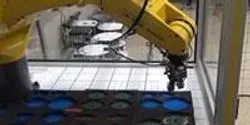Software

Neural prosthetic devices implanted in the brain's movement center, the motor cortex, can allow patients with amputations or paralysis to control the movement of a robotic limb—one that can be either connected to or separate from the patient's own limb. However, current neuroprosthetics produce motion that is delayed and jerky—not the smooth and seemingly automatic gestures associated with natural movement. Now, by implanting neuroprosthetics in a part of the brain that controls not the movement directly but rather our intent to move, Caltech researchers have developed a way to produce more natural and fluid motions.

In KPMG’S 2014 Food, Drink and Consumer Goods Industry Outlook Survey, 22 percent of the senior managers questioned said that “staying ahead of or navigating changes in the regulatory environment” would consume most of their time in the coming 12 months. Nearly 20 percent said that geographic expansion would be one of the primary areas of investment in the coming months. Taken together, these two data points echo a common food industry refrain: we want to expand internationally, but we’re increasingly aware of the difficulties and costs of doing so from a regulatory standpoint.

When implementing laboratory informatics systems, managers should consider both current and anticipated workflows, says Trish Meek, director of product strategy at Thermo Fisher Scientific (Waltham, MA). “They need complete agreement and buy-in from business owners and IT. Managers should consider the agility their business requires, for example, when bringing in a new product or instrument.”

Okay, let’s jump straight to the point. You’ve performed your due diligence and have decided that to remain viable your laboratory absolutely must transition to a laboratory information management system (LIMS). That is an important step, but perhaps one of the simplest.

Electronic laboratory notebooks (ELNs), one component of a lab’s information infrastructure, help laboratories capture and manage knowledge, streamline data management, protect intellectual property and foster collaboration. Both non-specific/generic ELNs (which compete directly against paper notebooks) and application/task-specific ELNs exist, each with their own fans.















